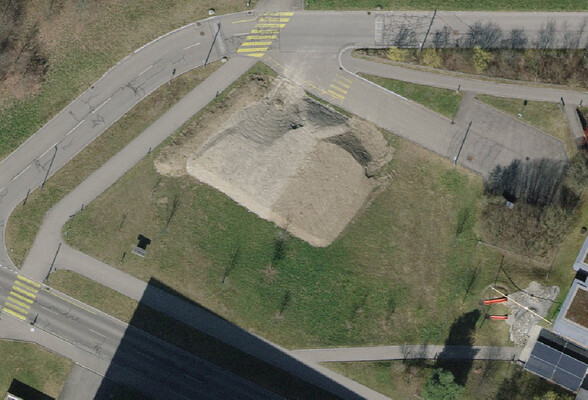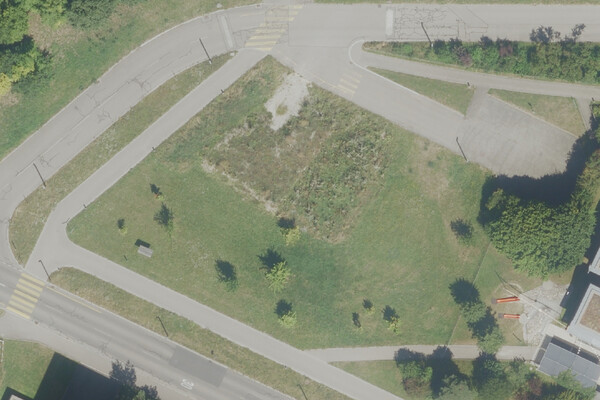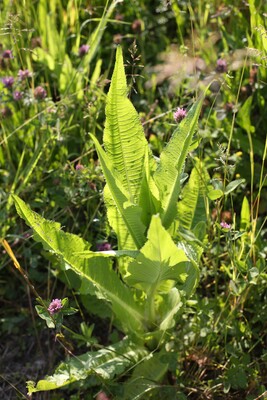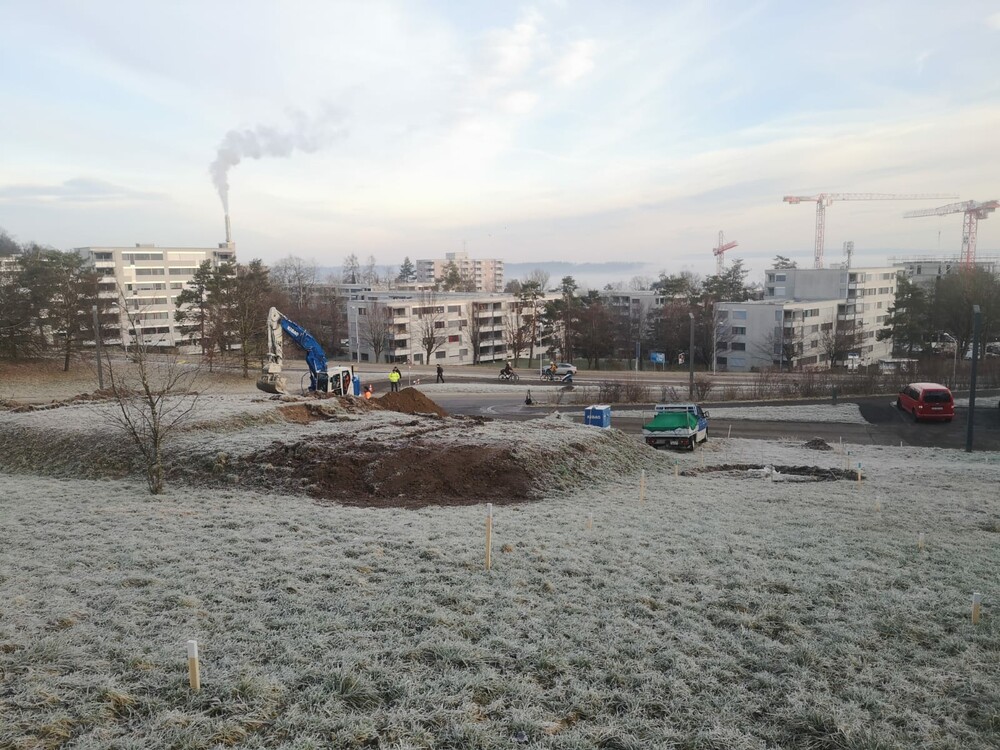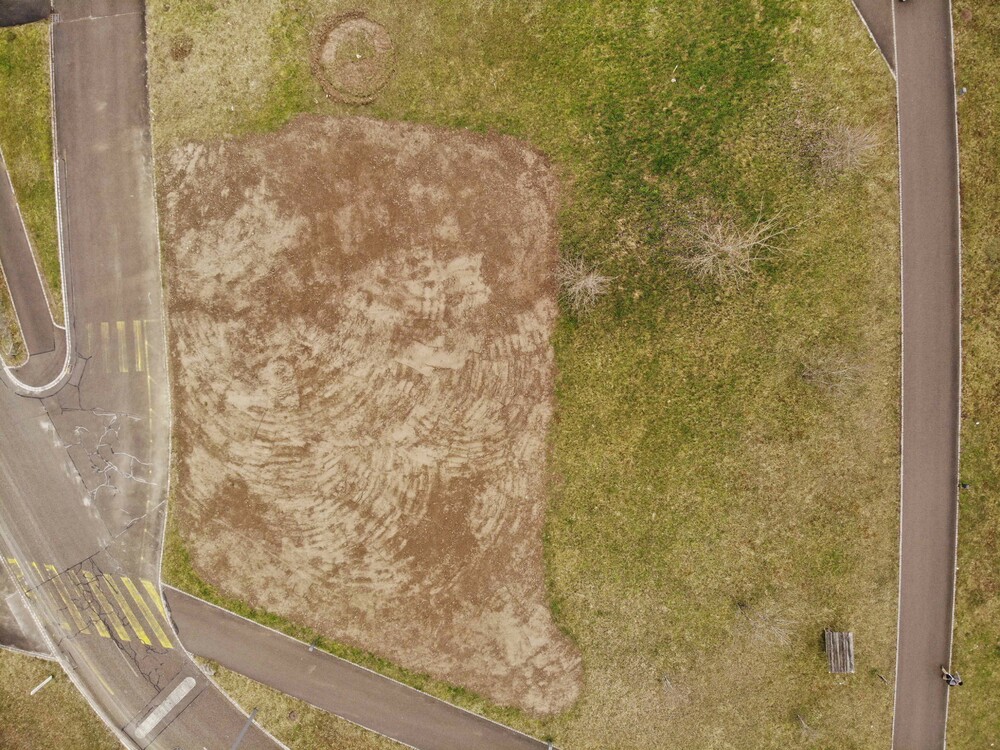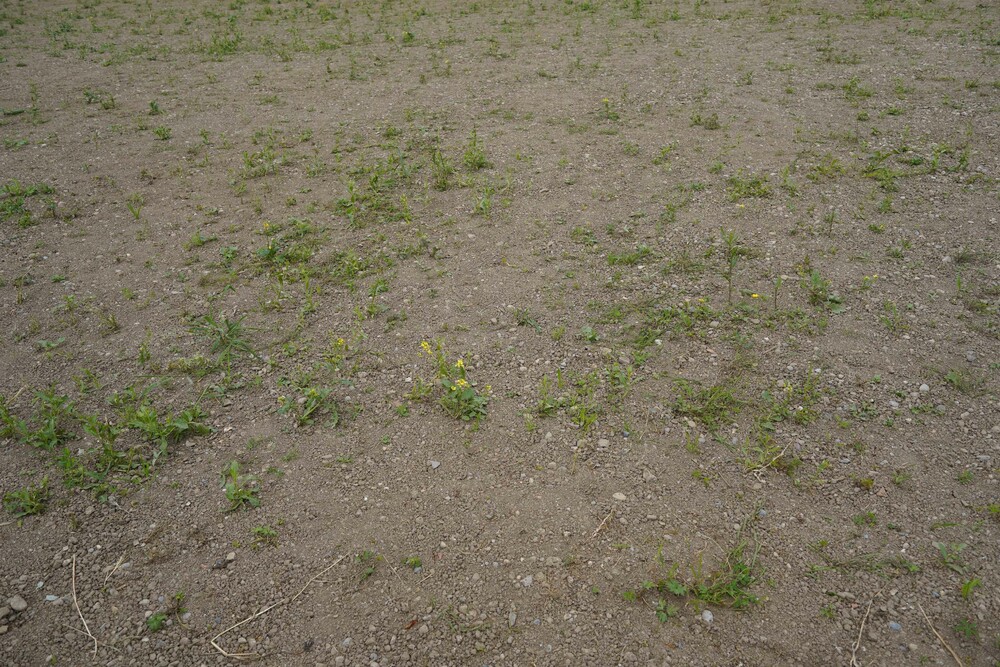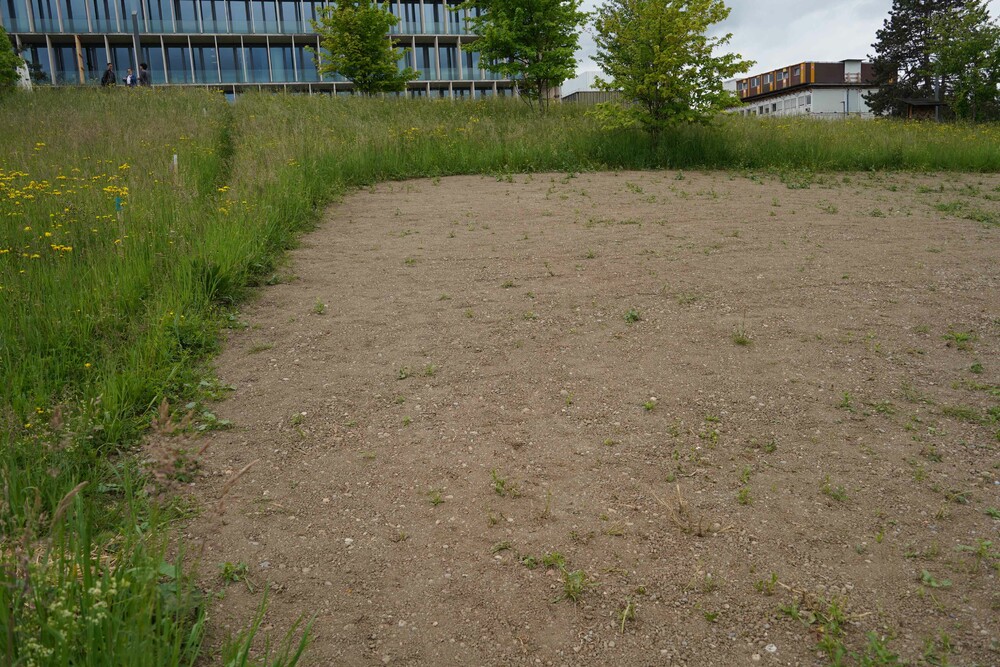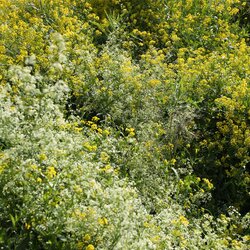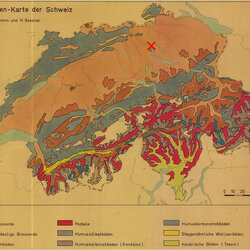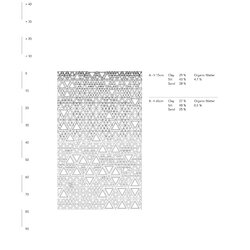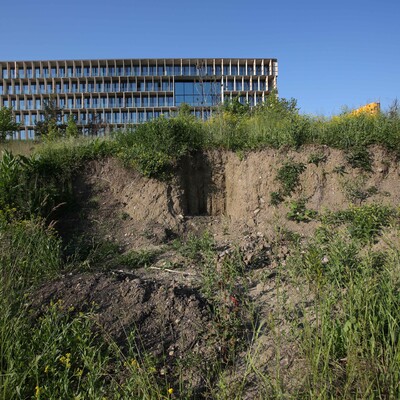
Topsoil Deposit
When we arrived at the garden in 2023, the plot was bordered by a topsoil deposit measuring around 25 x 25 x 1.5 meters. The topsoil, about the upper 15 cm of a soil, had been brought in from various construction sites on campus and temporarily stored next to our garden. This procedure is required by law, as topsoil is a particularly fertile and living soil that is worth protecting. It takes several hundred years to build up 1 cm of topsoil, but only some minutes to damage it. The mass of the deposit corresponds approximately to a volume of 1000 m3, and if we were to spread this over an area with a height of 15 cm, this would correspond to an area of 80 by 80 meters.
Aerial photographs from 2019 show that the soil deposit consists of three different types of soil, as three different soil colors are clearly visible. The topsoil was not sown, so that pioneer vegetation spread over the deep, fertile and loose soil, which was fundamentally different from the meadow vegetation next to it.
During a vegetation survey in May 2023, we found a diverse plant community. For example, we identified annual herbaceous plants such as wild teasel (Dipsacum fullonum), wood avens (Geum urbanum) and common stinging nettle (Urtica doica) as well as perennial shrub plants such as St. John's wort (Hypericum perforatum) and the neophyte Himalayan blackberry (Rubus armeniacus). We also identified small trees such as willow (Salix sp.), birch (Betula pendula) and commona dogwood (Cornus sanguinea). It is important to mention that the topsoil depot has not been mowed since it was created in 2019, only invasive neophyte species such as fleabane (Erigeron annuus) have been removed by ETH gardeners.
In February 2024, the landfill was rebuilt. The fertile soil was used to cover a different soil on another construction site on the ETH campus. What remained was an uncovered patch of soil, as all the plants in the original meadow have died and degraded over the past five years. Now we can observe how the vegetation is slowly returning. Which species will be there first? Will the vegetation look similar to the topsoil vegetation or more like the original meadow? How does the vegetation change in the first few years?


